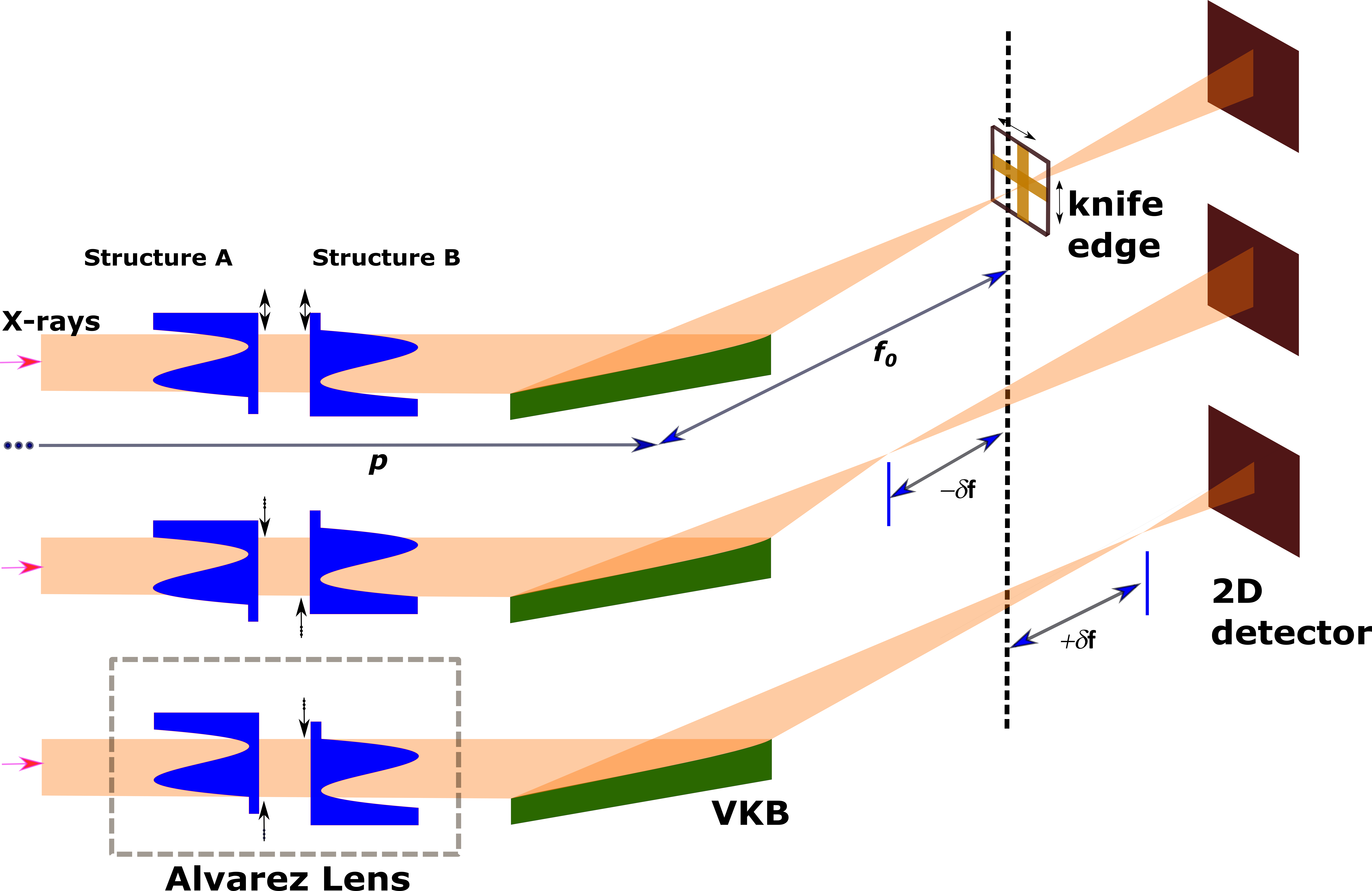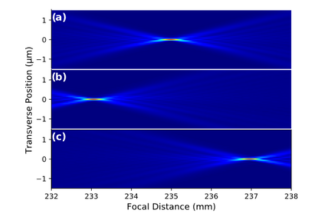In the 1960s, scientist Luis Walter Alvarez invented the Alvarez lens, an optical system that uses a pair of lenses to create a variable zoom. The two lenses sit one in front of the other in the optical beam, and a lateral shift of the lenses relative to each other (perpendicular to the beam) changes the optical power of the Alvarez pair. An Alvarez lens requires cubic surfaces that are challenging to fabricate, and it wasn't until 2000 that researchers at Lawrence Livermore National Laboratory were able to create a practical optical Alvarez lens device. However, with the refractive index of all material being very close to 1 for X-rays, X-ray optics are far more challenging. In work recently published in Nature Communications, optics scientists from Diamond's Optics and Metrology Group have developed an X-ray version that can dynamically vary the position of the focal plane of the X-ray lenses and mirrors used on many synchrotron beamlines. Adding Alvarez X-ray lenses (AXLs) to beamlines could improve the quality of focused X-ray beams and help exploit the higher quality X-rays from next-generation synchrotrons such as Diamond-II.

Many synchrotron facilities are implementing, or planning to implement, lattice upgrades that both reduce source emittance and increase X-ray coherence. Combined with advances in manufacturing X-ray optics, this means that diffraction-limited focusing of X-rays onto samples is on the horizon. However, optics misalignment and fabrication errors can introduce aberrations into the X-ray focusing system, so correction of the X-ray wavefront may be needed to ensure precise alignment of the beam onto the sample. Where compound X-ray refractive lenses (CRL) are used, a change in the energy of X-rays changes the lens focusing power, moving the focal plane along the z-axis. And in some situations, such as the use of environmental sample chambers, movement of the sample itself is constrained. It would, therefore, be helpful for beamlines to have a mechanism to independently adjust the vertical focus and the longitudinal position of the horizontal focus.
The variable focusing strength of an Alvarez lens means the position of its focus can be changed. However, they had only been used in visible optical systems. Diamond's Optics Group has now developed an X-ray version that can dynamically vary the position of the focal plane of the X-ray lenses and mirrors used on many beamlines.
Vishal Dhamgaye is a Beamline Scientist working in Diamond's Optics & Metrology Group, and lead author on the paper. He says:
Our Alvarez X-ray lens (AXL) uses two inline, profiled refractive plates. The concept is the same as the optical Alvarez lens, but the refractor plates are much smaller - 400 microns, with a thickness of 0.4-1.6 mm. Our design was fabricated at the microfabrication facility at the University of Lancaster.
The two refractor plates in the AXL can be independently translated in the direction transverse to the X-rays. Using a pair of AXLs allows beamline staff to change the X-ray focusing in two transverse directions, compensating for astigmatism, defocus and coma aberrations.

The Optics group had three AXLs of different strengths fabricated and then tested them on the Optics Test Beamline (B16), using two focusing optical elements – an X-ray mirror and a compound refractive lens and using a wavefront sensor for precise alignment.
Their experiments confirmed that the focus position of the X-ray mirror could be varied over a distance of up to several millimetres while eliminating coma aberration caused by the focusing mirror. In the case of the compound refractive lens, the AXL could maintain the focal length during changes in the incident energy. The compact AXLs can be easily inserted in the beam upstream or downstream of the focusing optical element.
Senior Optics Scientist David Laundy says:
This is the first demonstration of an Alvarez X-ray lens that can adaptively correct defocus and astigmatism aberrations of X-ray optics. For the moment, this is just a test system, but the ability of AXLs to bring samples into focus means they could be a valuable tool for all kinds of synchrotron techniques, including nanoprobe experiments, micro-crystallography and imaging.
Kawal Sawhney is the Principal Beamline Scientist on beamline B16 and head of the Optics and Metrology group. He added:
Continual developments of X-ray optics have enabled spectacular gains in beamline capabilities and leverage improvements in source technologies to yield higher quality X-ray beams at the experimental station. Development of the Alvarez lens for X-rays is an important step in this direction that would aid achieving diffraction limited focusing.
To find out more about the B16 Test beamline or discuss potential applications, please contact Principal Beamline Scientist Kawal Sawhney: [email protected].
Dhamgaye V et al. Alvarez varifocal X-ray lens. Nature Communications 14, 4582 (2023). DOI: https://doi.org/10.1038/s41467-023-40347-1
Diamond Light Source is the UK's national synchrotron science facility, located at the Harwell Science and Innovation Campus in Oxfordshire.
Copyright © 2022 Diamond Light Source
Diamond Light Source Ltd
Diamond House
Harwell Science & Innovation Campus
Didcot
Oxfordshire
OX11 0DE
Diamond Light Source® and the Diamond logo are registered trademarks of Diamond Light Source Ltd
Registered in England and Wales at Diamond House, Harwell Science and Innovation Campus, Didcot, Oxfordshire, OX11 0DE, United Kingdom. Company number: 4375679. VAT number: 287 461 957. Economic Operators Registration and Identification (EORI) number: GB287461957003.